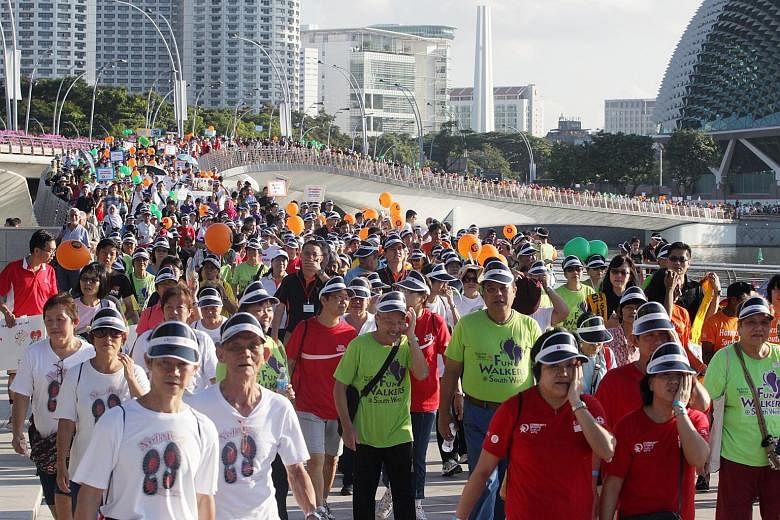Singaporeans are healthier today than 10 years ago because they participate more actively in sport and exercise more regularly.
Studies show that the number of Singaporeans engaging in physical activity at least once a week has risen gradually over the last decade.
In the 2014 Sports Index from Sport Singapore, the proportion of respondents who fell under the "frequent" (three or more times) category was 38 per cent.
This was more than double the 16 per cent of respondents in the same category in 2001, the year Sport Singapore first began tracking sport participation among citizens and permanent residents.
Altogether, 72 per cent of the 2,975 respondents said they had taken part in some kind of physical activity over the last month at the time they were interviewed.
Joseph Schooling's gold-medal triumph at the 2016 Rio Olympics may have opened Singaporean eyes to what is possible with swimming and sport in general.
But one does not need to be at his level to reap the benefits of physical activity. What would be good is to have his commitment to start an exercise routine and stick to it.
"Any physical activity is better than none," said Mr Ray Loh, an exercise physiologist at the Sports and Medicine Clinic at Tan Tock Seng Hospital (TTSH).
"For health benefits, you should do about 30 minutes of exercise at least five times a week at moderate intensity." Moderate intensity is defined as a noticeable increase in breathing and heart rate.
-
Most popular activities
-
Walking: 42 %
Jogging or running: 13.2 %
Swimming: 8.1 %
Badminton: 3.8 %
Dance sports: 3.1 %
Benefits from regular exercise include having a lower risk of chronic diseases such as coronary heart disease, stroke, Type 2 diabetes and colon cancer, according to the World Health Organisation.
There is evidence that people who exercise more often and more rigorously live longer, said Ms Ho Jiaying, senior physiotherapist at Singapore General Hospital (SGH).
For example, a 2006 American study indicated that physically inactive middle-aged women who engaged in less than an hour of exercise per week had a 52 per cent increase in mortality, compared with physically active women.
Middle-aged women (40-59 years old) who are married are the most sedentary demographic here, according to the Sports Index.
The most common excuse for not exercising, given by 77 per cent of sedentary respondents, was a lack of time.
Walking topped the Sports Index's list of the most popular activities, with almost 42 per cent of respondents, but three-quarters of them did so for less than the recommended 30 minutes at a time.
A 30-minute stroll is not likely to be very beneficial either.
Physiotherapist Ray Loh said: "The walking pace should be brisk enough to apply mild stress to the cardiovascular system in order to improve fitness."
The other popular activities included outdoor jogging or running (13.2 per cent), swimming (8.1 per cent), badminton (3.8 per cent) and dance sports (3.1 per cent), which narrowly edged out football.
"These are all great whole-body cardiovascular fitness exercises," said SGH senior physiotherapist Khoo Shin Jiun. "They will help in improving agility and flexibility, muscle and bone strength, and weight management."
Ms Khoo added that walking and swimming are best suited for those with injuries or medical conditions, as they are low-impact exercises.
There may be benefits in not sticking to a single activity. "Many people are too ambitious when starting out and exercise at an intensity that the body is not ready for," said Mr Loh. "It is good to engage in different activities that require different muscle groups, to prevent over-use of any one group."
Ms Khoo recommended doing Sport Singapore's Physical Activity Readiness Questionnaire before starting any new exercises, to see if there is a need to consult a doctor or physiotherapist.
The questionnaire can be downloaded from Sport Singapore's website (www.sportsingapore.gov.sg).
A little commitment to sport and exercise may not take you all the way to the Olympic Games, but it can take you a long way in life.


